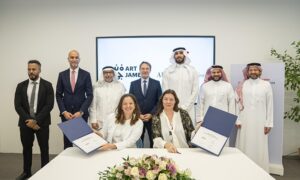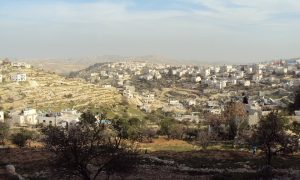Economic Growth in MENA
The Challenge of Youth and the Imperative of Pragmatism
by Jean Pierre Lehmann
Contributor – Middle East Economic Affairs
Lausanne – Suisszerland
Two years and half ago I wrote an article for this magazine, entitled “The Middle East Must Look East”, arguing that the Middle East should look to East Asia – South Korea, China, Taiwan, ASEAN (Association of South East Asian Nations) – for inspiration and lessons on achieving economic growth. Forty years ago the East Asian region was totally shambolic; the cultural revolution was still raging in China and the Vietnam War was coming to an extremely brutal end as hundreds-of-thousands of ‘boat people’ escaped to seek international refuge – ultimately numbering an estimated two-million. Twenty years later the World Bank published its seminal report, The East Asian Miracle: Economic Growth and Public Policy.
How did East Asia get from there to here? There are of course multiple causes as tomes and tomes of academic volumes have been written on the subject. Fundamentally, however, a significant part of the answer lies in the subtitle: economic growth was prioritised and public policy was geared to growth. What were the philosophical underpinnings? In a nutshell: pragmatism. After all the chaotic ideological shenanigans of China under the luminary Mao Zedong, his successor, the down-to-earth reformer Deng Xiao-ping’s approach is best summarised in his famous phrase: “it does not matter whether a cat is black or white, so long as it catches mice it is a good cat”.
Clearly economic growth per se cannot be the be-all and end-all of human existence. Indeed, in a more recent article I wrote for Forbes magazine, I have argued that East Asia should move “beyond GDP-ism”: family, culture, nature, spirituality – the sound of a symphony, the beauty of a painting or the mystical serenity of a place of worship, are sources of abundant non-material enrichment. They must not be discarded nor minimised. But the first obligation of a state must be to identify and implement the means to abolish poverty and all the misery it implies, to provide proper public goods – health, education, justice and infrastructure – to create employment and especially to give youth hope that conditions will be improved and thus life worth-while. As I have repeated in many of my publications: if youth has no hope for the future, there is no hope for the future. And for that there is no alternative to economic growth.
Conditions in the MENA region today are catastrophic, comparable to what they were in East Asia 40-50 years ago, and potentially even more explosive. In one sense, in striking contrast to the aging populations of East Asia, MENA has – potentially – the tremendous benefit of a young population. This potential, however, can only be realised if youth is properly educated, gainfully employed and emotionally motivated. If this proves to be the case in an effective manner, then one might anticipate a World Bank report in 2035 entitled “The MENA Miracle: Harnessing the Demographic Dividend to Economic Growth”. If this challenge is not addressed, it is impossible to imagine a positive scenario for MENA. With a huge youth population and with astronomic rates of youth unemployment, MENA is a mega-powder keg.
A few priorities need to be set to achieve the “MENA miracle” scenario and thereby avoid the “MENA disaster” scenario. At the moment there is a vicious circle in that because education in MENA is often woefully inadequate, prospects for employment are dim – not just at home, but regionally and internationally – leading to youth disaffection, as opposed to motivation, thus providing breeding grounds of jihadism. Insecure social and political conditions act as major obstacles to investment, whether domestic or foreign, thereby aggravating the downward spiral of the vicious circle.
The 2002 Arab Human Development Report (AHDR), in seeking to answer the question why MENA was doing so badly in comparison to other regions of the world, identified three critical “shortages”: shortage of freedom, shortage of knowledge and shortage of womanpower. The condition of most women in the Middle East is the most blatant illustration of atavistic ideology obstructing constructive pragmatism. As the AHDR report puts it somewhat crudely: “Denying half of a country’s people the chance to contribute productively to their nation’s economy is tantamount to refusing to pump oil from half of its wells”. Thus in educating, employing and motivating youth, it will be essential for MENA states to ensure that this is as much the case with the female half of the youth population as it is with the male half (uneducated males are the biggest obstacle to female emancipation).
Laying the social foundations for well-educated and well-motivated youth of both genders will transform MENA into a highly desirable investment location – both domestic and foreign. Another distinct advantage with a more dynamic environment will be much enhanced prospects for the reversal of the Arab brain drain. There are thousands and thousands of MENA intellectuals, scientists, entrepreneurs who choose to live abroad because conditions are so much better than they are in MENA. If conditions improve, there will be very strong incentives to return, and indeed to return with the strong desire to participate in building the new 21st century MENA region.
This has been the case with Vietnam. Once the authorities in Hanoi stopped pursuing purely ideological divisive policies and instead adopted a growth-enhancing pragmatic approach to national development, many of the erstwhile refugees returned to Vietnam, with many having in the meantime acquired advanced degrees, developed extensive networks and generated capital, thereby contributing in a most dynamic manner to a virtuous circle of growth and development. From having been one of the poorest and most disastrous countries, Vietnam today is quite an economic success story.
A crucial issue in generating economic growth in MENA is to begin by recognising that it is not really a region; it is more a figment of the imagination. The comparison with ASEAN is instructive. Whereas most of the 400 or so million inhabitants of the MENA share a common language (Arabic) and a common religion (Islam), there is nothing remotely approaching a MENA common market. Intra-regional trade and investments are minimal and in the case of many destinations, even intra-regional travel is complicated.
In contrast, the 625 or so million inhabitants of ASEAN share virtually nothing in common; there is no common language and a great diversity of religions. As wars were devastating the region in the 1960s and 1970s, in the 1980s regional leaders articulated the vision of transforming Southeast Asia from a battlefield to a market place. 2015 saw the establishment of the AEC (ASEAN Economic Community). Though there are still many daunting challenges ahead, bearing in mind where ASEAN has come from and especially comparing it with MENA, developments over the last decades have been phenomenal.
The vision for MENA should be to unite the region’s well educated, fruitfully employed and motivated youth to construct together a viable and dynamic growth and development oriented region based on a common and integrated market and laying solid foundations by significantly decreasing the shortages of freedom, knowledge and womanpower.
Jean-Pierre Lehmann, Emeritus Professor of International Political Economy, IMD & Founder of the Evian Group, Lausanne, Switzerland. Visiting Professor, Business & Economics, Hong Kong University.
http://www.sage.com/us/sage-live



























